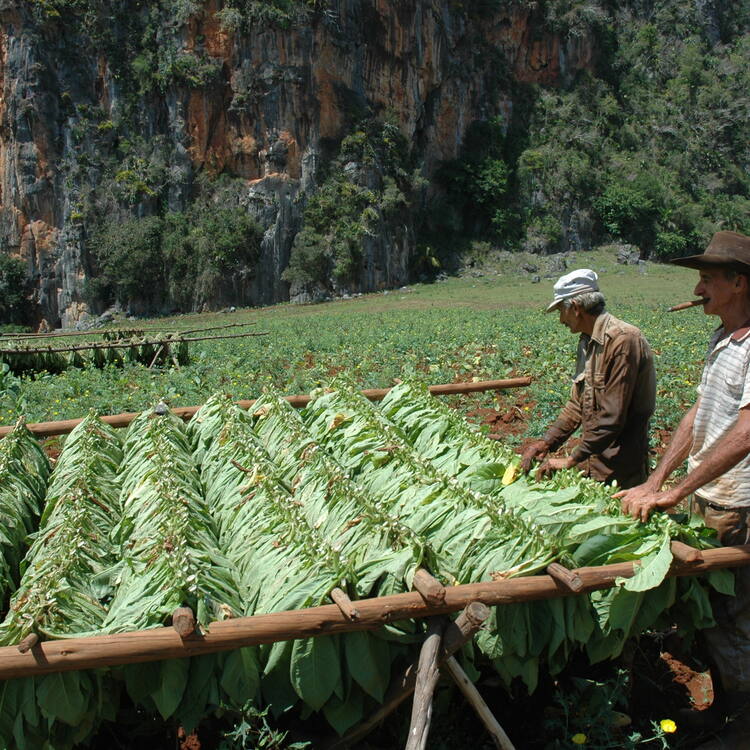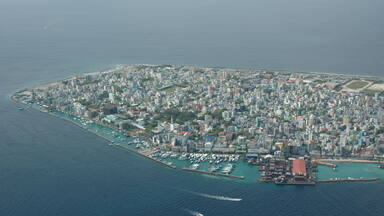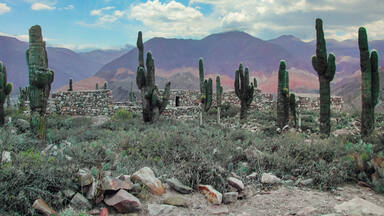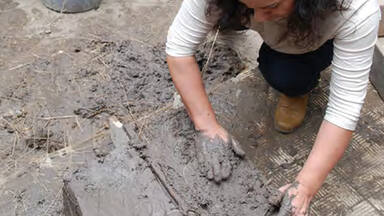Viñales Valley
Viñales Valley
The Viñales valley is encircled by mountains and its landscape is interspersed with dramatic rocky outcrops. Traditional techniques are still in use for agricultural production, particularly of tobacco. The quality of this cultural landscape is enhanced by the vernacular architecture of its farms and villages, where a rich multi-ethnic society survives, illustrating the cultural development of the islands of the Caribbean, and of Cuba.
Description is available under license CC-BY-SA IGO 3.0
Vallée de Viñales
La vallée fertile de Viñales est encerclée de montagnes et son paysage est parsemé d'affleurements rocheux spectaculaires. Les techniques agricoles traditionnelles y sont toujours utilisées, en particulier pour la production de tabac. C'est un paysage culturel enrichi par l'architecture traditionnelle de ses fermes et villages. Une riche société pluriethnique s'y perpétue, illustrant le développement culturel des îles caraïbes et de Cuba en particulier.
Description is available under license CC-BY-SA IGO 3.0
وادي فينيالس
يقع وادي فينياليس الخصب في منخفض تحيطه الجبال من كلّ من حدبٍ وصوب وفي منظر طبيعي مرصّعٍ بالنتوءات الصخريّة الأخاذة. ما زالت التقنيّات الزراعيّة التقلييّة تُستخدم في الوادي خصوصاً لصناعة التبغ. وهذا منظر طبيعي ثقافي تغنيه هندسة المزارع والقرى التقليديّة حيث يعيش فيه خالداً مجتمع متعدد الإثنيّات يجسّد التطوّر الثقافي لجزر الكاريبي وخصوصاً كوبا.
source: UNESCO/CPE
Description is available under license CC-BY-SA IGO 3.0
比尼亚莱斯山谷
比尼亚莱斯山谷群山环绕,山谷风景与裸露的岩石交相辉映。农业生产,尤其是烟草种植业中,仍然在采用传统技术。农场和村庄的当地建筑大大提升了这一文化景观的内涵,一个富裕的多民族社会在此繁衍,诠释了加勒比海岛屿和古巴的文化发展。
source: UNESCO/CPE
Description is available under license CC-BY-SA IGO 3.0
Культурный ландшафт долины Виньялес
Ландшафт долины Виньялес, окруженной со всех сторон горами, расчленен выразительными скальными образованиями. Здесь все еще используются традиционные методы сельскохозяйственного производства, особенно в табаководстве. Ценность этого культурного ландшафта увеличивается за счет традиционной народной архитектуры ферм и деревень. Сохранившееся тут многонациональное сообщество свидетельствует о богатой этнокультурной истории Кубы и других островов Карибского моря.
source: UNESCO/CPE
Description is available under license CC-BY-SA IGO 3.0
Valle de Viñales
Rodeado de montañas, el fértil valle de Viñales está sembrado de espectaculares afloramientos rocosos. Sus habitantes siguen utilizando técnicas agrícolas tradicionales, en particular para la producción del tabaco. La riqueza de su paisaje cultural se ve realzada por la arquitectura tradicional de sus granjas y aldeas, donde perduran todavía las características una sociedad pluriétnica de peculiar riqueza, muy ilustrativa del desarrollo cultural de las islas caribeñas en general y de Cuba en particular.
source: UNESCO/CPE
Description is available under license CC-BY-SA IGO 3.0
ビニャーレス渓谷
キューバ西部の拠点ビナル・デル・リオから北へ約30km。周辺には多くの洞窟があり、そのひとつ、かなり大きなインディアナの洞窟にはかつて先住民がここに住み、植民地時代には奴隷の隠れ家、独立戦争時代には革命家の隠れ家であった。この渓谷における活発な経済的・社会的営みにも関わらず、数世代にわたる農民たちはその営みと自然の美に見事な調和と均衡を保ち続け、相異なる諸文化の融合をなし遂げてきた。source: NFUAJ
Viñales vallei
De Viñales vallei wordt omringd door bergen en het landschap wordt afgewisseld met indrukwekkende rotspartijen. Er worden nog traditionele, eeuwenoude technieken gebruikt voor de landbouwproductie, met name voor de productie van tabak. Uit recente experimenten blijkt namelijk dat mechanische methoden de kwaliteit van de tabak verlagen. De kwaliteit van het cultuurlandschap wordt verstrekt door de architectuur van de boerderijen en dorpen, waar een rijke multi-etnische samenleving zich staande houdt, die de culturele ontwikkeling illustreert van de eilanden van het Caribisch gebied en van Cuba. De regio kent een rijke inheemse traditie die zich uit in architectuur, ambachten en muziek.
Source: unesco.nl
Outstanding Universal Value
Brief synthesis
The Viñales Valley in the Sierra de los Organos near the western end of the island of Cuba is an outstanding karst landscape encircled by mountains and dotted with spectacular dome-like limestone outcrops (mogotes) that rise as high as 300 m. Colonised at the beginning of the 19th century, the valley has fertile soil and a climate conducive to the development of stock-raising and the cultivation of fodder and food crops. Traditional methods of agriculture have survived largely unchanged on this plain for several centuries, particularly for growing tobacco. The quality of this cultural landscape is enhanced by the vernacular architecture of its farms and villages, where a rich multi-cultural society survives, its architecture, crafts and music illustrating the cultural development of Cuba and the islands of the Caribbean.
The striking karst landscape of the Viñales Valley is notable for its mogotes, a series of tall, rounded hills that rise abruptly from the flat plain of the valley. It is also significant for its cultural associations, particularly its traditional agricultural practices related to growing tobacco. Because mechanical methods of cultivation and harvesting lower the quality of tobacco, time-honoured methods such as animal traction are still used. The lush landscape is largely rural in character. Most of the buildings scattered over the plain are simple, built of local and natural materials and used as homes or family farms. The village of Viñales, strung out along its main street, has retained its original layout and many interesting examples of colonial architecture, mostly one-storey wooden houses with porches. The valley is home to an original culture, a synthesis of contributions from indigenous peoples, Spanish conquerors and African slaves who once worked the tobacco plantations. An excellent illustration is the musical expression of the field worker (veguero), of which Benito Hernández Cabrera (known as the Viñalero) was the main interpreter. Traditional crafts also flourish here. Cubans identify strongly with the Viñales Valley because of the beauty of the site and its historical and cultural importance. In the visual arts, the valley has been transformed into a symbol of the Caribbean landscape by various artists.
Criterion (iv): The Viñales Valley is an outstanding karst landscape in which traditional methods of agriculture (notably tobacco growing) have survived unchanged for several centuries. The region also preserves a rich vernacular tradition in its architecture, its crafts, and its music.
Integrity
Within the boundaries of the Viñales Valley cultural landscape are located all the natural and cultural elements necessary to express its Outstanding Universal Value, including the karst landscape’s defining features, the agricultural usage patterns and the vernacular architecture, as well as the land tenure, traditional agricultural methods of farming and associated infrastructure that support the cultural landscape’s related intangible heritage. The 132-km2 property is of sufficient size to adequately ensure the complete representation of the features and processes that convey the property’s significance, and it does not suffer from adverse effects of development and/or neglect. Tourism development is expected to represent a future threat to the integrity of the property.
Authenticity
Viñales Valley is a “living landscape” with a high degree of authenticity in terms of location and setting, forms and designs, materials and substances, uses and functions, traditions and techniques, and spirit and feeling. It has been able to preserve its specific character, while adapting to modern conditions of life and receiving flows of visitors. The property’s attributes thus express its Outstanding Universal Value truthfully and credibly.
There are risks that can threaten the integrity and authenticity of the property as a cultural landscape, including factors such as frequent natural disasters affecting the country (hurricanes), reduction of the source of water supply due to climate change and the increasing pressures for urban socioeconomic development needs.
Protection and management requirements
About 92 percent of the property is in the hands of private owners, with 30 percent owned by individual farmers and the rest by the Asociación Nacional de Agricultores Pequeños (National Association of Small Farmers). The Viñales Valley is protected by provisions in the Constitución de la República de Cuba (Constitution of the Republic of Cuba) of 24 February 1976 and by the Declaration of 27 March 1979 designating it as a National Monument, in application of the Ley de Protección al Patrimonio Cultural (Law on the Protection of Cultural Property, Law No. 1 of 4 August 1977), and the Ley de Monumentos Nacionales y Locales (Law on National and Local Monuments, Law No. 2 of 4 August 1977). The karst landscape of the Viñales Valley is also part of Viñales National Park. The high authority responsible for management is the Consejo Nacional de Patrimonio Cultural (National Council of Cultural Heritage). Local supervision is ensured by the Provincial Centre for Cultural Heritage of Pinar del Río, the provincial branch of the Ministry of Science, Technology and the Environment, the provincial branch of the Ministry of Tourism and the provincial branch of the Ministry of Agriculture, all of them as part of the Council of Provincial Administration.
The Management Plan for the property was approved in 1999 by the Consejos de la Administración Provincial y Municipal (Councils of Municipal and Provincial Administration). The National Monuments Commission is the institutional entity responsible for the review and approval of all Management Plans and projects developed for the property. The Management Plan contains 67 projects through nine sub-programs: administration; training; construction; protection; agricultural resource management; research, monitoring and scientific cooperation; public use; interpretation and environmental education; and institutional cooperation and collaboration. There is a scarcity of financial and material resources for implementing part of the plans.
Sustaining the Outstanding Universal Value of the property over time will require controlling the effects of increased tourism by devising and executing appropriate management strategies in this regard; developing and implementing an emergency action plan to eliminate or mitigate the harmful effects of hurricanes and other natural disasters; developing and implementing strategies to address any negative consequences arising from climate change; addressing the increasing pressures associated with urban socioeconomic development needs; and establishing monitoring indicators related to these and other actions that may have an impact on the Outstanding Universal Value, authenticity and integrity of the property
 View photos from OUR PLACE the World Heritage collection
View photos from OUR PLACE the World Heritage collection



